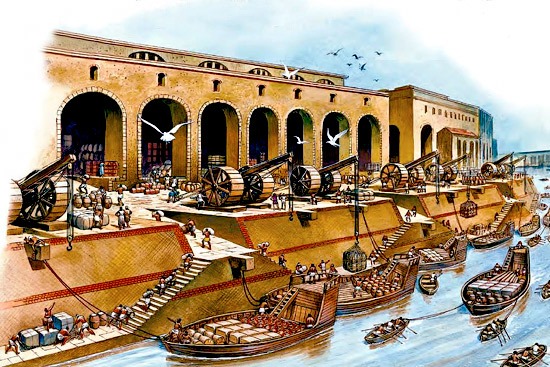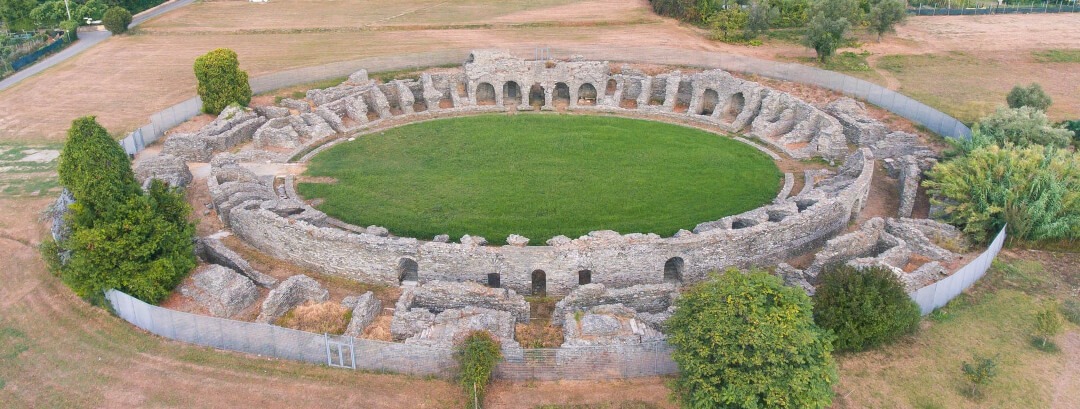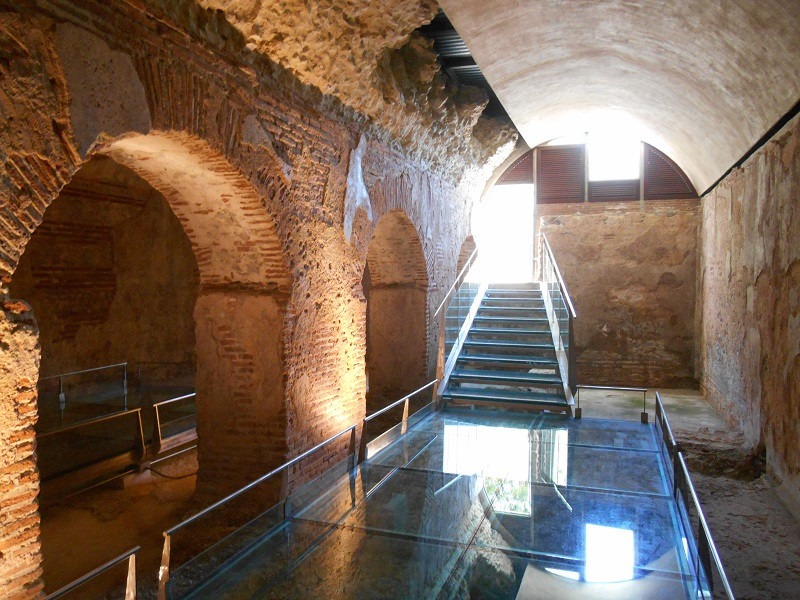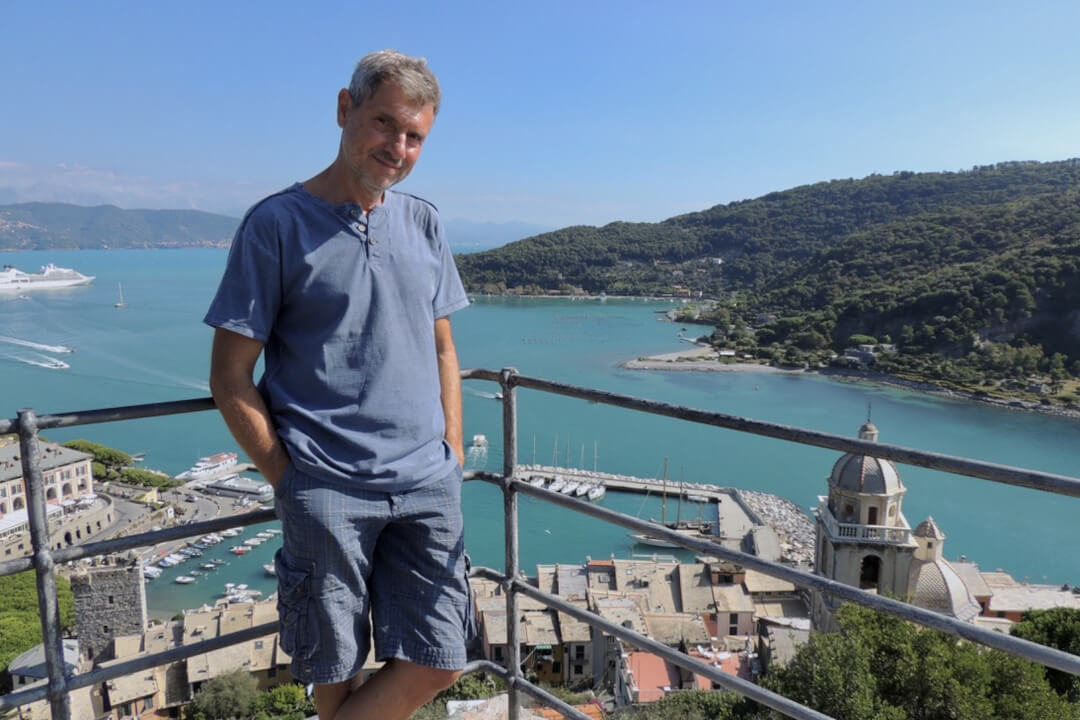The Gulf of Poets is a crossroads of history. Here, among cliffs and quiet bays, the Romans left visible traces of their presence: seaside villas, docks, and port structures. A world that still resurfaces today, thanks to those who sail along the same ancient routes. Let’s explore them!
The Gulf of La Spezia: where history meets sailing
Shaped like a wide, sheltered fjord, the Gulf was ideal for naval operations year-round. Thanks to its calm waters and strategic location—valuable both commercially and militarily—the Romans used the inlets at Bocca di Magra, La Spezia, and Portovenere for docking and port activities.

The Romans began ruling the La Spezia area in 299 BC, when they defeated the Ligurians. In 177 BC, the Romans founded the colony of Luni, which flourished thanks to the marble from the Apuan Alps. Its port, Portus Lunae, near the mouth of the Magra River, became a launching point for Roman troops headed to conquer Sardinia and Spain.
Bocca di Magra and the legacy of Luni
To retrace Roman history through sailing and archaeology, dock your boat at the Bocca di Magra marina and visit the National Archaeological Museum and the Archaeological Site of Luni. The area includes the Capitolium, an amphitheater, several private villas with mosaics and frescoes, and a Christian basilica. Many artifacts are on display in the museum.

Another notable site is the Roman Villa of Bocca di Magra. Likely built between the 1st century BC and the 4th century AD, this ancient summer residence was laid out on terraced levels descending toward the sea and the old Portus Lunae. It’s open by appointment or during special events like Culture Week and Heritage Days.
La Spezia: Roman echoes among piers and museums
Sailing deeper into the Gulf of Poets brings you to La Spezia, where the past meets the present along the piers, old shipyards, and in the city’s museums:
- The Naval Technical Museum of La Spezia features a section on underwater archaeology and Roman-era maritime finds from the area.
- The Ubaldo Formentini Civic Archaeological Museum, housed in San Giorgio Castle, holds a rich collection of Roman artifacts—ceramics, coins, amphorae, and architectural fragments—unearthed in La Spezia and along the coast.
Portovenere and the Villa of Varignano
Finally, you arrive at Portovenere, one of the most enchanting stops on this journey. With its colorful houses and the cliffside Church of San Pietro, the town also tells a story of Roman villas and ancient remains nestled in a breathtaking landscape.

One of the most important sites is the Roman Villa of Varignano, in the bay of the same name. This seaside villa, which also served an agricultural purpose, featured olive oil production facilities, mosaic floors, and panoramic terraces. The remains show evidence of a well-organized settlement, directly connected to the sea by a small harbor.
Shipwrecks have been found in the waters of Portovenere, including one south of Tino Island, along with cargoes of amphorae and marble. The Gulf of Poets preserves the tangible memory of ancient navigation—each stop telling a story of the sea, trade, and culture.
Roberto Soldatini’s journey along ancient ports
One of the modern-day sailors who chose to follow the coast by boat in the footsteps of history is Roberto Soldatini, author of the book In Search of Roman Ports: Sailing Along an Ancient Route (Alla ricerca dei porti romani. A vela lungo una rotta antica. Mursia, 2024).
Soldatini, born in 1960 in Rome, is no ordinary writer—he is an orchestra maestro and cellist who worked with major institutions. Guided by a passion that blends sea, music, and archaeology, he has lived aboard his boat, Denecia II, with his cello “Stradi” since 2011, turning his life into a floating symphony.

In 2018, he sailed over 1,000 kilometers from Rome to Arles, stopping at more than sixty ports. Three key stops were in the Gulf of Poets: Bocca di Magra, La Spezia, and Portovenere. Each one gets a special chapter in his book, which reads like a sailing journal and a dive into history, often in the company of the fictional Prefect Rugilio Damaziano, who adds a touch of humor to the narrative.
Discover Portovenere Blog had the pleasure of chatting with Soldatini.
What’s your most vivid memory from sailing through the Gulf of Poets?
Definitely arriving in Portovenere, a village that’s remained untouched. Looking at old black-and-white photos from the late 1800s and early 1900s, you can see how little has changed. The last major intervention—the promenade—was done in the late 19th century. Thankfully, no post-war ‘eyesores’ have been tacked on. And that’s not likely to happen, as the Spezzino Archipelago, Cinque Terre, and Portovenere have been UNESCO sites since 1997. This little Italian gem is safe.
While I was there, I loved strolling down the ‘caruggio’ with its tempting artisan shops, and feast for my tastebuds thanks to the local Ligurian cuisine. And every evening, as the sun set, I couldn’t resist the call of Lord Byron—his poetry still echoing in the winds of this storied coast.

Was there a particular moment, place, or encounter that stood out during your time in Bocca di Magra, La Spezia, or Portovenere?
My encounter with the Sea Shepherd ship and volunteers. I ended up joining them with my boat-home for an anti-poaching mission in the Gulf of Poets. Sea Shepherd is an international organization committed to stopping the destruction of marine habitats and the slaughter of wildlife in our oceans. These people are out there defending and protecting our planet in every way they can. Playing music for them on the top deck, as a thank-you for all they do for us—that was a powerful moment.

Discover more from Discover Portovenere Blog
Subscribe to get the latest posts sent to your email.